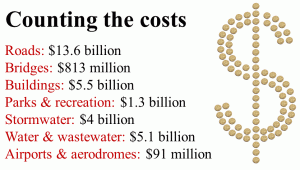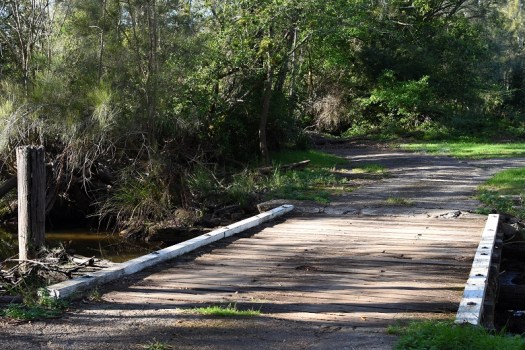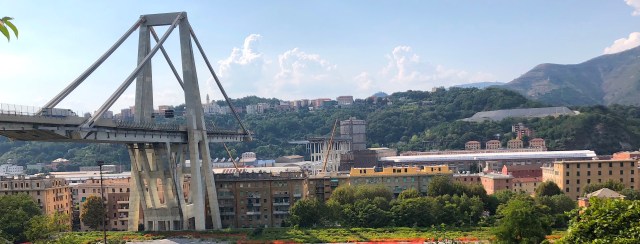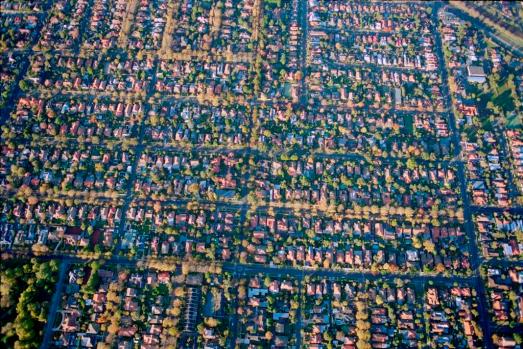
Ongoing under-investment in councils’ management of community assets is leading to increased risk and reduced safety, warns a major forthcoming report.
While the Commonwealth and state governments have been focused on “nation building” infrastructure projects a new analysis shows that $30 billion of community assets is in poor condition and requires “significant renewal.”
The latest State of the Assets report, to be launched tomorrow by the Australian Local Government Association, also warns the proportion of infrastructure in poor condition is not decreasing despite increased spending on asset maintenance by councils since 2005.
The report also raises questions about the “currency and degree of maturity” of councils’ asset management and financial planning, and calls for regulators to boost oversight and support to the local government sector.
“The need for investment in infrastructure today exceeds $30 billion and is likely to continue to grow to meet productivity and safety requirements,” says the report authored by TechnologyOne Strategic Asset Management for ALGA.
Local government in Australia manages $345 billion in community infrastructure, which includes roads, buildings, parks and water assets.
Experts and local government peak bodies have been calling for greater funding to help council’s manage ageing assets, through specific grant programs and by restoring financial assistance grants to 1 per cent of Commonwealth revenue.
The latest State of the Assets report, which is based on the responses of 408 councils or 75 per cent of the sector, shows that 9 per cent of sealed roads and 16 per cent of unsealed roads are in poor to very poor condition.
Some 21 per cent of timber bridges and 4 per cent of concrete bridges are in poor to very condition, the report shows.
Last week Government News reported on new expert warnings that councils do not have sufficient funds to repair or replace thousands of ageing timber bridges.
The State of the Assets 2018 report shows that across all asset categories, councils reported 63 per cent of infrastructure was in good or very good condition, 28 per cent was in fair and 9 per cent in poor to very poor condition.

The report’s authors, Steve Verity of TechnologyOne and Anne Mellor from Planit Local, said that councils have made “significant headway” in sustaining community infrastructure by boosting their spend on asset renewal.
Yet despite this investment and effort, the proportion of assets (by value) reported in poor condition “remains unchanged during this time,” they found.
Councils’ capability questioned
The report also “raises doubt” about how local government is managing community infrastructure and planning for the future of ageing assets.
The proportion of councils that have asset management plans in place has fallen in recent years across all asset categories except for roads, the report shows.
While the proportion of road asset management plans held steady at 82 per cent, there was a fall in asset management planning in the other areas including:
- building and facilities – down from 83 per cent in 2015 to 70 per cent in 2017
- parks and recreation areas – from 72 per cent to 61 per cent
- stormwater assets – from 71 per cent to 64 per cent
- water and wastewater assets – from 90 per cent to 31 per cent.
Similarly, while long-term financial planning helps with funding asset renewal, the analysis found that the proportion of councils that had a long-term financial plan fell from 97 per cent in 2013 to 81 per cent last year.
The proportion of councils including financial projections from their asset management plans in long-term financial plans has also decreased in recent years, the report shows.
Must be a ‘shared task’

David O’Loughlin, president of ALGA, said that Commonwealth funding cuts had contributed to the “steady decline” in the number of councils with asset management and long-term financial plans since 2015.
“It appears that most have tried to use the diminishing funds on road maintenance and let their asset knowledge diminish over time,” he told Government News.
Cr O’Loughlin said that tackling the backlog in community infrastructure maintenance “has to be a shared task” for all levels of government.
“Funding cuts since 1996 have steadily eroded local government’s ability to tackle this in a sustainable way, and it has to be reversed,” he argued.
He added:
“There simply is not enough money in the system to help local government, particularly in regional and rural communities, get on top of the asset and infrastructure load.”
Councils needed greater funding for asset maintenance as well as detailed objective studies on the state of their infrastructure and the cost required to bring it up to standard, Cr O’Loughlin added.
Ongoing process needed
The new analysis concludes that “it is apparent an ongoing process of continuous improvement for the local government sector is needed now.”
It recommends that local government regulators audit councils’ asset management and long-term financial plans, and help councils increase their knowledge and confidence in determining costs and lifespans of their assets.
The report also recommends that ALGA advocate for the required investment in local government infrastructure.
Comment below to have your say on this story.
If you have a news story or tip-off, get in touch at editorial@governmentnews.com.au.
Sign up to the Government News newsletter.





I totally support greater funding for infrastructure repair or rebuilding. The combination of the Commonwealth’s fixation on funding “new openables”, rather than spending to maintain what we have already is part of the problem, with the underlying the poor funding of local government generally in Australia. On a global comparison, we have one of the poorest funded local governance structures in the world.